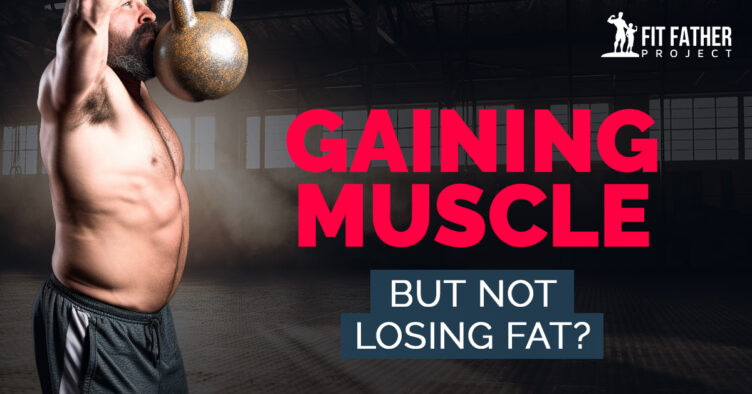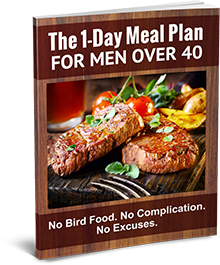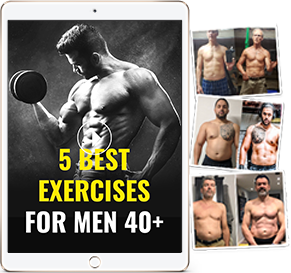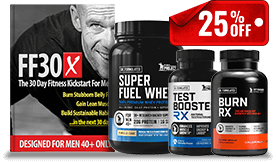Sometimes, working out and watching what you eat just isn't enough. You're working hard to build muscle, but your physique looks no closer to the image you have in your head — the muscle just isn't showing through.
You’re not alone, believe me! I've been there, and so have thousands of other men who've joined the Fit Father Project.
The problem is that gaining muscle requires MORE food, and losing fat requires LESS food.
It sounds counter-intuitive that you could do both at the same time. If you find yourself gaining muscle but not losing fat, you may need to hack the system and go against nature. The good news is that it is possible!
In this article, you'll learn:
-
- The science behind muscle gain.
-
- How the fat loss process REALLY works.
-
- Ways you can boost your fat burning.
-
- What foods help you burn fat and gain muscle.
-
- The 9 key mistakes you're probably making if you're gaining muscle but not losing fat.
Welcome To The Fit Father Project – Your New Nutrition and Workout Resource!
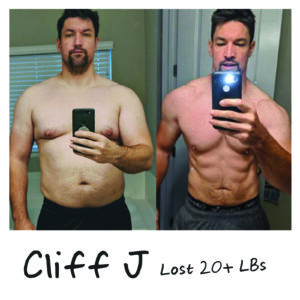
At the Fit Father Project, we specifically help busy men over 40 get back in shape by offering free information and resources on our website, backed up with our Fit Father 30X (FF30X) Program.
This article will teach you about what to do when you're gaining muscle but not losing fat, but we've got something for everyone, and we'll help you create the nutrition and workout plan that's right for YOU.
The goal of everything we do here at the Fit Father Project is to simplify eating and exercise for you, so you can get in great shape and stay strong and healthy for your family — without any unnecessary complications.
Sound good? Good. Let's dive in!
The Science Behind Muscle Gain
Training
Muscles get bigger when you use them. If you push them to their limits, then you will cause tiny tears in the fibers of your muscles. This is a good thing. Your body will heal these tears, making the muscle stronger and bigger in the process.
This is why it’s essential to do strength training. Building muscles requires intense physical stress. But that doesn't mean you have to spend hours in the gym. The most efficient exercises are ones you can do at home with a pair of dumbbells or a kettlebell.
Eating
It is important to make sure that your body has enough protein to complete protein synthesis. When you’re lifting weights, it’s recommended that you consume between 1.2 and 1.5 grams of protein per kilogram of your body weight. You should be able to do this through the food you eat, but it is possible to take a protein supplement to ensure you reach your target on a daily basis.
Rest
You should also be aware that muscles should be rested for between 24 and 48 hours between workouts. This gives them the opportunity to repair and grow stronger, allowing your exercise routine to be successful.
Understanding the Fat Loss Process
The other side of the coin involves losing fat, and the most basic way of burning fat is simply to consume fewer calories than your body needs to survive. A calorie deficit will cause your body to convert the energy stored in fat cells into glucose for energy. In the process, your fat cells will be depleted, reducing the fat levels in your body.
But a calorie deficit can also reduce muscle.
That’s why you need to eat enough calories to provide your muscles with the energy they need without overeating. It can seem like a difficult balance, but it doesn't need to be. If your current regime has you gaining muscle but not losing fat, you're probably almost there. You may just need to change things up a bit.
The secret to getting a cut, muscular, and toned body is half about the right muscle-building strategies and half about the right fat-loss strategies.
Changing Your Routine to Boost Fat Burning
So you know you need to eat more than your maintenance calories in order to encourage muscle growth. You also know that you need to consume fewer calories than your body's energy requirements in order to burn fat. While it may seem contradictory, these two goals can be achieved by adopting the right routine.
Training
You should be doing some sort of strength training three times per week. Here are some great exercises to get you started:
Add in moderate-intensity cardio three times per week, for between 30 minutes and an hour. Choose something you enjoy, whether it’s cycling, running, or anything else that gets your heart pumping.
Eating
- Make sure you’re getting enough protein in your diet. Experts recommend between 1.2 and 1.5 grams per kilogram of body weight.
- Avoid processed food.
- Consume some protein and carbs after your workout.
- Fill up on fiber to keep you feeling satiated for longer.
- Change your eating habits: Calculate the number of calories you need to consume each day here and then eat between 200 and 300 less than that amount. Eat more than your maintenance calories but less than the amount your body really needs for that day.
- Get enough sleep. Your body needs time to rest, balance its hormones, and repair your body. You should aim for between 6 and 8 hours every night.
To help adjust your eating habits, it is beneficial to understand that this is a lifestyle change, not a diet. You can get some meal ideas from this free 1-day meal plan.
Here’s A Free Weight Loss Meal Plan For Busy Men 40+
Discover exactly what to eat for breakfast, lunch, and dinner to lose belly fat & feel energized 24/7 without hard dieting...
Foods to Help Burn Fat and Gain Muscle
It’s important to note that building muscle will help with your fat-burning efforts, even if the scales aren't going down. Muscle burns more calories at rest than fat does. Having more muscle will increase your calorific burn and help you to burn fat. Eating the right foods will help.
 Add these items to your grocery list:
Add these items to your grocery list:
- Eggs – They're full of protein, healthy fats, and vitamin Bs.
- Salmon – A three-ounce serving has approximately 17 grams of protein! It also has omega-3 fatty acids and more vitamin Bs.
- Chicken – The breast is also full of protein; about 26 grams in a three-ounce serving. Some studies have shown that a high-protein chicken diet can help weight loss.
- Greek Yogurt – As well as protein, Greek yogurts have fast-digesting whey protein and slower-digesting casein protein.
- Lean Beef – Protein, B vitamins, minerals, and creatine are all present in lean beef. Quality is important if you’re choosing lean beef. 90% lean ground beef has 145 calories and 5 grams of fat. 70% lean ground beef is 228 calories and 15 grams of fat!
- Shrimp – Most seafood is good for you, and a three-ounce portion of shrimp will give you 18 grams of protein, 1 gram of fat, and no carbs!
- Soybeans – A great choice if you’re not keen on meat. Soybeans have plenty of vitamin K, iron, phosphorous, and 14 grams of protein per 86-gram serving.
- Cottage Cheese – With 28 grams of protein in a 226-gram serving, this is a great way to boost your protein intake without significantly increasing carbs and calories.
- Peanuts – One 73-gram serving has 17 grams of protein, 16 grams of carbs, and plenty of unsaturated fat. A small serving every day is a good way to boost your nutrient levels.
If You're Gaining Muscle But Not Losing Fat, You're Probably Making These 9 Mistakes
There are several common mistakes that you need to avoid if you want to boost your muscle growth and burn fat. If you find yourself gaining muscle but not losing fat, you could be making these mistakes.
Mistake 1: Not Getting Enough Sleep
The importance of sleep cannot be stressed enough. If you're not sleeping well, do something to change it.
Here are a few tips to get more sleep:
- Get blackout curtains
- Lower the temperature of the room
- Use background noise (box fan, air purifier, or even a noise-producing phone app)
- Go to bed earlier (duh!)
- Avoid blue light before bedtime (cellphones, laptops, TVs, etc.)
Mistake 2: Not Eating Enough/Improper Balance of Macronutrients
In order to give your muscles the fuel they need to grow, you need to eat more than your maintenance calories. Of course, everything you eat should be healthy food. You need a balance of carbohydrates, proteins, and fats to give your body the fuel it needs to complete your exercises and repair muscle.
Mistake 3: Eating Too Much
Eating more than your maintenance amount doesn't mean you should eat everything in sight! It is important to be aware of your maintenance calorie amount and how much you need to build the muscle you’re seeking. This is the maximum calories you consume per day. Eating more than your maintenance amount while working out regularly will simply make you gain muscle AND fat.
Mistake 4: Eating At The Wrong Times
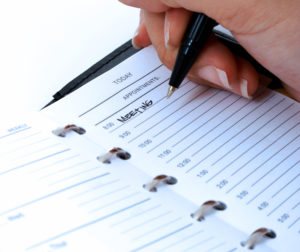 Before and after exercise are the most important times. If you don’t have enough carbohydrates during this period, then your body could break down your muscles with the hormone cortisol, which creates glucose for energy. You need to consume enough carbohydrates to provide your body with fuel without overdoing it.
Before and after exercise are the most important times. If you don’t have enough carbohydrates during this period, then your body could break down your muscles with the hormone cortisol, which creates glucose for energy. You need to consume enough carbohydrates to provide your body with fuel without overdoing it.
That's why it’s a good idea to start a food diary.
Recording everything you eat will help you to see when and where you are overeating. After a few weeks, you’ll be able to refine your eating plan and even start preparing your meals in advance. Having a proper account will help you to consume the right number of calories and balance your carbohydrates, proteins, and healthy fats.
Mistake 5: Eating Processed Foods
All macronutrients are important. Portioning out your plate with a good balance of whole foods is the simplest way to make sure you're getting enough carbs, protein, and fat.
We call this the Perfect Plate, and here's what it consists of:
-
- Half of each plate should be vegetables, particularly lower-calorie non-starchy ones.
-
- One-fourth of each plate should be nutritious, protein-rich foods.
-
- One-fourth of each plate should be fiber-rich carbohydrates and/or heart-healthy fats.
The important thing to remember is that not all carbs are created equally. Processed carbs are easily absorbed, and they won’t keep you feeling full for very long. They also cause blood sugar levels to spike, which encourages fat storage. Unrefined carbs will release energy more slowly and keep you feeling fuller.
You should also be aware that processed foods tend to be high in sugar and other artificial additives. When you’re looking to build muscle and burn fat, you want to minimize sugar and know exactly what you are putting into your body. This isn't possible if you consume processed foods.
Mistake 6: Consuming Too Much Fat
Some fat consumption is essential for the health of your body, even when you’re trying to lose weight. The problem is that fat is more calorie-dense than protein and carbohydrates.
At approximately 9 calories per gram, fat has more than double the amount of energy.
The trick is to keep your fat consumption to between 20-30% of your overall consumption.
Mistake 7: Not Getting Enough Protein
Protein is the building block of cells in your body. In fact, it is an essential ingredient in repairing your muscle cells. Tiny tears in your muscles are caused when you work out. The repair process is what makes them stronger and bigger.
You don’t need to go mad on protein, but you do need to consume enough to provide your muscles with the nutrients they need.
Mistake 8: Not Training Hard Enough
If you're serious about gaining muscle and losing fat, you need to weight train two or three times a week, and it needs to be intense. You have to strain your muscles, causing the micro-tears mentioned above, and allow them to grow. It is important that you push your limits while weight training.
You should be aiming for 3 sets of 8 reps for most lifts.
The last reps should be almost impossible to complete. If you can easily do all three sets, then you need to increase the weight.
Mistake 9: Doing Low-Intensity Cardio
Cardio training is essential for burning fat, provided it is at the right intensity.
You should aim to do cardio for between 30-60 minutes at a time and, again, two to three times a week.
Anything longer than an hour will encourage your body to break down muscle cells for food.
Here are the 5 most common muscle-building mistakes made by men over 40!
Final Thoughts
It’s worth remembering that everyone is different. The secret to avoiding gaining muscle but not losing fat is to keep it varied. It’s OK to take a few days off training to switch it down or up.
Changing things up will prevent your body from becoming accustomed to the workout, which is likely to cause it to lose its effectiveness.
Perhaps the most important tip we can give you is to join Old School Muscle and get the support you need to keep working towards your goal and become the man you want to be!
After watching his own Dad lose his health and pass away at the young age of 42, Dr. Balduzzi founded The Fit Father Project and Fit Mother Project to help busy dads and moms get and stay healthy for their families. Dr. Anthony Balduzzi holds dual degrees in Psychology & Nutrition from the University of Pennsylvania, a Doctorate of Naturopathic Medicine, and is also a former national champion bodybuilder. He’s is most proud of the fact that he’s helped over 40,000 families in over 100 countries lose weight and get healthy for life.![]()
Dr. Anthony Balduzzi, NMD
Men's Health Doctor & Founder
Fit Father Project & Fit Mother ProjectFounder, Fit Father Project & Fit Mother Project
This proven "Old School Muscle Program For Guys 40+" combines the “old school” bodybuilding secrets with the “new school” science… to produce muscle & strength building results fast. Only for guys 40+ who want to build muscle. If you're frustrated with stubborn belly fat, failed diets, and time-consuming workouts, this is the answer you’ve been looking for…Here’s How Busy Guys 40+ Are Building Age-Defying Muscle And Strength… Working Out Just 3 Hours Per Week...
See the Old School Muscle (OSM) Program overview here. You’ll discover how this proven program has helped thousands of guys 40+ pack onage-defying muscle and strength – the smart & sustainable way. »
*Please know that weight loss results & health changes/improvements vary from individual to individual; you may not achieve similar results. Always consult with your doctor before making health decisions. This is not medical advice – simply very well-researched info on gaining muscle but not losing fat.

